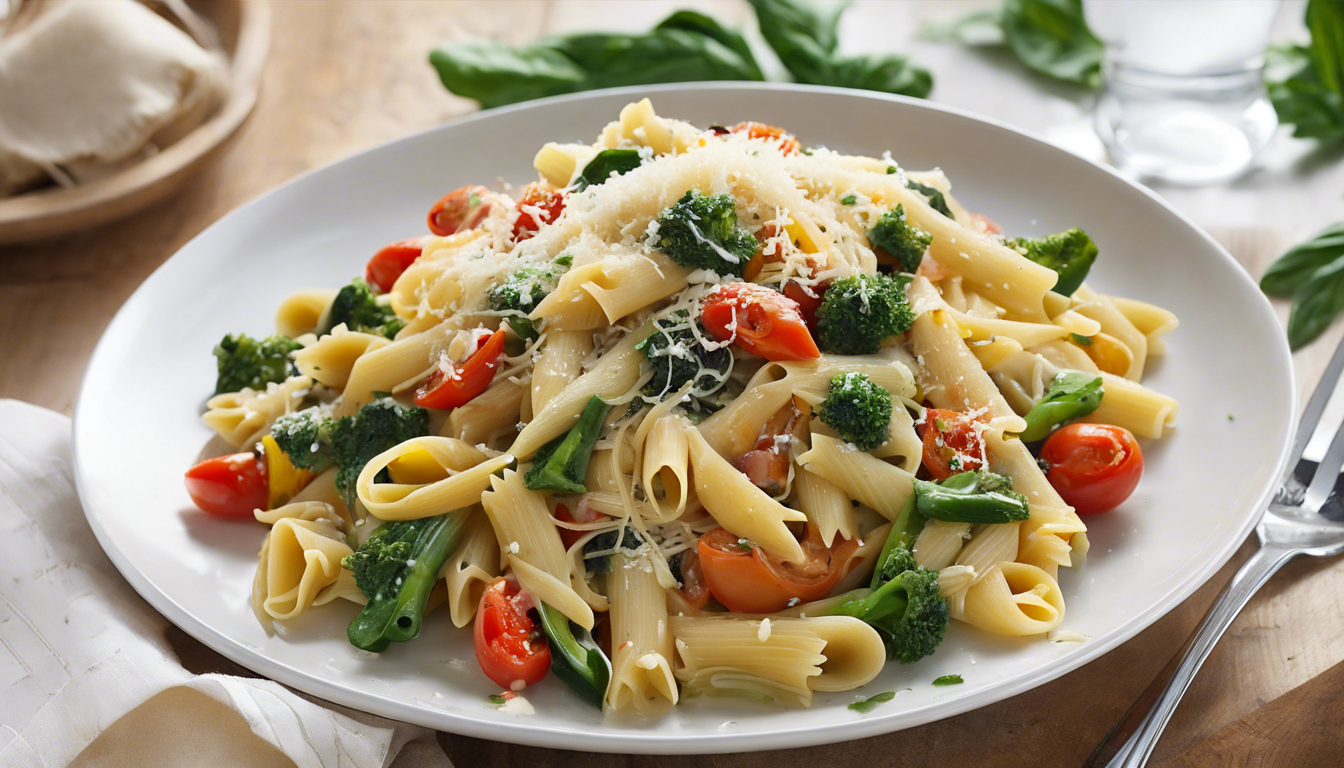
Origins and history
Pasta Primavera, a delightful dish that celebrates the bounty of fresh vegetables, has an interesting origin story that dates back to the 1970s. Contrary to what one might assume, this dish is not a traditional Italian recipe but rather an American creation with Italian influences. The term “primavera” means “spring” in Italian, which is fitting given the dish’s emphasis on fresh, seasonal vegetables.
The inception of Pasta Primavera is often credited to Sirio Maccioni, the renowned restaurateur behind the famous New York City restaurant Le Cirque. According to culinary lore, Maccioni first prepared the dish during a trip to Canada, where he was tasked with creating a meal for a group of discerning guests. With limited ingredients on hand, he improvised by combining pasta with a medley of fresh vegetables, olive oil, and Parmesan cheese. The result was a light, vibrant dish that quickly gained popularity.
Upon returning to New York, Maccioni introduced Pasta Primavera to the menu at Le Cirque, where it became an instant hit. The dish’s success was further cemented when it was featured in a 1977 article in The New York Times, which praised its simplicity and fresh flavors. This exposure helped to popularize Pasta Primavera across the United States, where it became a staple in Italian-American cuisine.
Despite its relatively recent creation, Pasta Primavera has earned a place in the pantheon of beloved pasta dishes. Its appeal lies in its versatility and the way it showcases the natural flavors of fresh vegetables. Over the years, countless variations have emerged, with chefs and home cooks alike experimenting with different combinations of vegetables, herbs, and seasonings. However, the essence of the dish remains the same: a celebration of fresh, seasonal produce paired with perfectly cooked pasta.
Key ingredients
When it comes to making Pasta Primavera, the key ingredients are what truly make this dish shine. The beauty of this recipe lies in its flexibility, allowing you to use whatever fresh vegetables are in season or available to you. Here is a list of essential ingredients that form the foundation of a classic Pasta Primavera:
- Pasta: Traditionally, long pasta like spaghetti or fettuccine is used, but you can also opt for penne or farfalle for a different texture.
- Olive Oil: A good quality extra virgin olive oil is crucial for sautéing the vegetables and adding a rich, fruity flavor.
- Garlic: Fresh garlic cloves, minced or thinly sliced, provide a robust base flavor.
- Vegetables: A variety of colorful, fresh vegetables such as bell peppers, cherry tomatoes, zucchini, broccoli, and carrots. Feel free to add or substitute with asparagus, peas, or snap peas depending on the season.
- Herbs: Fresh basil and parsley are commonly used, but you can also incorporate thyme, oregano, or chives for additional layers of flavor.
- Cheese: Grated Parmesan or Pecorino Romano cheese adds a savory, umami element to the dish.
- Lemon: Fresh lemon juice and zest brighten up the flavors and add a refreshing tang.
- Salt and Pepper: Essential for seasoning and bringing out the natural flavors of the ingredients.
Now, let’s move on to the recipe itself. Follow these steps to create a delicious and vibrant Pasta Primavera:
- Step 1: Cook the pasta according to the package instructions until al dente. Reserve a cup of pasta water, then drain and set aside.
- Step 2: While the pasta is cooking, heat a generous amount of olive oil in a large skillet over medium heat. Add the minced garlic and sauté until fragrant, being careful not to let it burn.
- Step 3: Add the vegetables to the skillet, starting with the ones that take longer to cook, such as carrots and broccoli. Sauté for a few minutes before adding the quicker-cooking vegetables like bell peppers, zucchini, and cherry tomatoes. Cook until the vegetables are tender but still crisp.
- Step 4: Season the vegetables with salt, pepper, and a squeeze of fresh lemon juice. Add the cooked pasta to the skillet, tossing everything together to combine. If the mixture seems dry, add a splash of the reserved pasta water to create a light sauce.
- Step 5: Remove the skillet from heat and stir in the fresh herbs and grated cheese. Toss until the pasta is well-coated and the cheese has melted slightly.
- Step 6: Serve the Pasta Primavera immediately, garnished with additional herbs, cheese, and a final drizzle of olive oil if desired.
By focusing on fresh, high-quality ingredients and following these simple steps, you can create a Pasta Primavera that is both delicious and visually stunning. Enjoy experimenting with different vegetable combinations and herbs to make this dish your own.
Cooking techniques
When preparing Pasta Primavera, mastering a few key cooking techniques can elevate your dish from good to exceptional. Here are some essential tips to ensure your Pasta Primavera turns out perfectly every time:
- Blanching Vegetables: For vegetables that require a bit more cooking time, such as broccoli or carrots, blanching can be a useful technique. Briefly boiling these vegetables in salted water before adding them to the skillet helps to soften them slightly while preserving their vibrant color and nutrients. After blanching, immediately transfer the vegetables to an ice bath to stop the cooking process.
- Layering Flavors: Building layers of flavor is crucial for a well-balanced Pasta Primavera. Start by sautéing garlic in olive oil to create a fragrant base. Add vegetables in stages, beginning with those that take longer to cook. This ensures that each vegetable is cooked to perfection and contributes its unique flavor to the dish.
- Using Pasta Water: The starchy water left over from cooking the pasta is a valuable ingredient. Adding a splash of pasta water to the skillet helps to create a cohesive sauce that clings to the pasta and vegetables. This technique not only enhances the texture but also helps to marry the flavors together.
- Finishing with Fresh Herbs: Adding fresh herbs at the end of cooking preserves their bright, aromatic qualities. Stirring in basil, parsley, or other herbs just before serving ensures that their flavors remain vibrant and fresh, providing a delightful contrast to the cooked vegetables.
- Balancing Acidity: A squeeze of fresh lemon juice or a sprinkle of zest can brighten up the entire dish. The acidity cuts through the richness of the olive oil and cheese, adding a refreshing tang that enhances the overall flavor profile.
- Cheese Integration: Grated Parmesan or Pecorino Romano should be added off the heat to prevent it from clumping or becoming greasy. Stirring the cheese into the hot pasta and vegetables allows it to melt gently, creating a creamy, savory coating.
- Serving Temperature: Pasta Primavera is best enjoyed immediately after cooking. Serving it hot ensures that the pasta remains al dente and the vegetables retain their crisp-tender texture. If you need to reheat leftovers, do so gently over low heat to avoid overcooking the vegetables.
By incorporating these techniques into your cooking process, you can ensure that your Pasta Primavera is not only delicious but also showcases the natural beauty and flavors of fresh, seasonal vegetables. Happy cooking!
